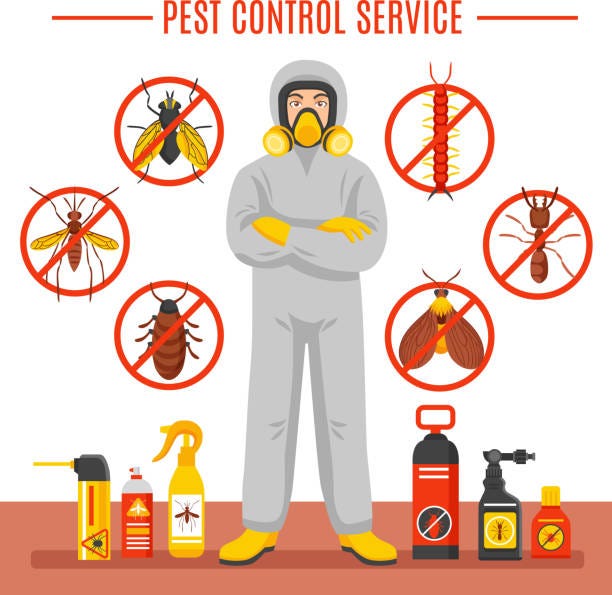A1 Bed Bug Exterminator Charlotte - Effective and Budget-friendly Services
A1 Bed Bug Exterminator Charlotte - Effective and Budget-friendly Services
Blog Article
Bed Pest Therapy Breakdown: Contrasting Chemical Vs. Non-Chemical Solutions
In the world of pest control, specifically when dealing with the relentless problem of bed insects, the choice between chemical and non-chemical therapy solutions can be a pivotal one. Both strategies provide distinct benefits and disadvantages, affecting factors such as performance, security considerations, and general cost. By examining the nuanced details of each method, a more clear understanding of which path to pursue in resolving a bed bug problem can be achieved.
Efficiency of Chemical Treatments
Chemical therapies for bed bug infestations have actually been widely acknowledged for their quick and potent efficacy in eradicating these parasites. When considering the performance of chemical treatments, it is crucial to understand that they can supply a quick and extensive remedy to a bed insect problem.
Furthermore, chemical therapies have the advantage of offering recurring results, suggesting that they can continue to get rid of bed pests even after the preliminary application. This recurring action is especially beneficial in combating any potential re-infestations. In addition, the quick activity of chemical treatments can bring relief to people encountering serious bed pest problems, permitting them to restore control of their home swiftly.
Safety And Security Worries With Chemical Solutions
When using chemical solutions for bed pest treatment is guaranteeing the safety and security of passengers and the atmosphere,One vital element that calls for mindful factor to consider. While chemical therapies can be effective in eradicating bed pests, they might position risks if not taken care of effectively. One of the key safety and security interest in chemical remedies is the possible damage they can trigger to human health and wellness. Exposure to particular chemicals utilized in bed insect treatments can lead to respiratory system concerns, skin irritability, or various other adverse responses, especially in individuals with pre-existing problems or level of sensitivities. Additionally, inappropriate application or dosage of chemical pesticides can lead to poisonous deposits sticking around in the cured area, positioning long-term health and wellness threats to passengers.
In addition, the ecological impact of chemical solutions is one more substantial factor to consider. Some pesticides utilized in bed pest therapies might be unsafe to helpful insects, wildlife, and ecological communities if they seep right into the dirt or water systems. It is important to make use of chemical therapies deliberately, complying with safety and security guidelines, and taking into consideration much less hazardous alternatives to alleviate these threats and guarantee the secure and efficient monitoring of bed bug problems.
Benefits of Non-Chemical Methods
Thinking about the prospective security worries and environmental influence related to chemical services for bed bug therapy, exploring non-chemical methods offers an appealing option with a number of distinct advantages. Non-chemical techniques use a safer choice for households, especially those with pet dogs, people, or youngsters conscious extreme chemicals. These methods get rid of the risks of direct exposure to poisonous materials, lowering the potential for damaging wellness results. In addition, non-chemical therapies are eco-friendly, as they do not contribute to air or water air pollution, making them a sustainable choice for insect control.
Additionally, non-chemical remedies can be effective in targeting bed insects, including hard-to-reach areas where chemical therapies may not permeate - A1 exterminators charlotte nc. Approaches such as heat therapy, vacuuming, heavy steam cleansing, and mattress coverings supply comprehensive elimination without the usage of harmful chemicals.
Limitations of Non-Chemical Treatments

Additionally, non-chemical treatments typically need numerous applications to attain successful obliteration. This can be lengthy and may not always guarantee complete removal of all bed pests and their eggs, specifically in hard-to-reach or surprise places.
In addition, the success of non-chemical treatments greatly relies upon correct execution and thoroughness, which can be testing for individuals without expert expertise. Poor application of non-chemical techniques may result in incomplete eradication, leading to consistent invasions and the need for additional therapies.
Therefore, while non-chemical treatments have their benefits, it is important to acknowledge these constraints and consider them when figuring out one of the most reliable method for handling bed bug infestations.
Expense Contrast: Chemical Vs. Non-Chemical Options
Given the limitations connected with non-chemical treatments, a crucial element to review in the context of bed insect administration is the expense contrast in between chemical and non-chemical choices. In comparison, non-chemical treatments like heat treatment or heavy steam can be more costly, with prices varying from $1,000 to $6,000 for a whole home. While the preliminary cost of chemical treatments may seem lower, several therapies might be needed to totally eradicate the invasion, potentially increasing the total price.
Conclusion

Taking into consideration the potential security concerns and ecological impact connected with chemical solutions for bed bug therapy, checking out non-chemical approaches offers an encouraging option with several distinctive advantages.Given the constraints associated with non-chemical treatments, a crucial facet to evaluate in the context of bed insect management is the price contrast between chemical and non-chemical alternatives. In comparison, non-chemical therapies like warm treatment or steam can be extra expensive, with expenses varying from $1,000 to $6,000 for a whole home. While the first price of chemical therapies might appear reduced, numerous treatments might be needed to completely get rid of the invasion, possibly enhancing the total A1 bed bug treatment in charlotte cost.In conclusion, when comparing chemical and non-chemical bed bug therapy alternatives, it is crucial to take into consideration efficiency, safety, benefits, constraints, and price.
Report this page